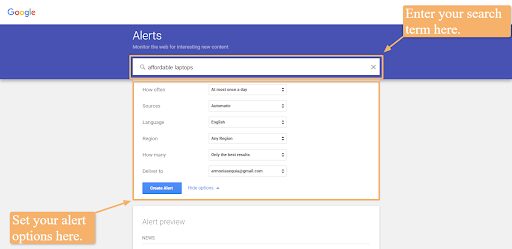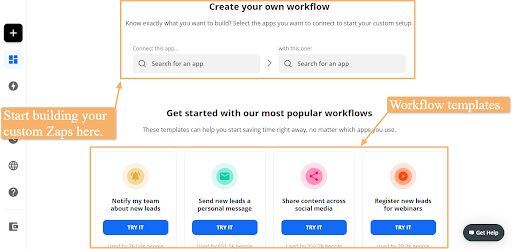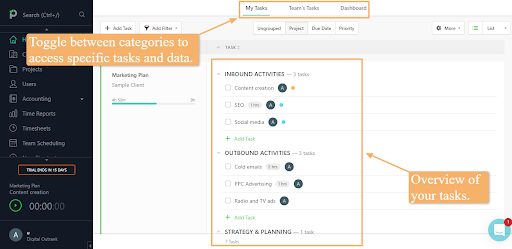
If the content marketing framework you’re using is unclear, inefficient, and you’re not getting good enough results out of them, then you need to give your campaigns a closer look.
If you leave things as they are, you’ll end up with TONS of rework, missed deadlines, and your collaboration with your team can become a total nightmare.
Although your content marketing strategy involves many moving parts and will require more than just making your content more interesting and creative, there are tried and tested methods that can help you improve your processes.
In this guide, we’ll look into four ways to improve your content marketing workflows and increase your ecommerce sales.
1. Automate critical tasks

Automation in your content marketing workflows is vital to streamline tasks — from your content creation down to your campaign performance monitoring.
Plus, integrating automation into your workflow can help ensure you’re going through all the steps properly for efficient content production and promotion.
Here are some of the tasks in your content marketing workflow that you can automate.
- Content idea generation. Getting insights about buzzworthy topics that your target audiences are interested in automatically will save you time and effort in scouring the web. You can use tools such as Google Alerts to monitor the web to find interesting content and get notifications about blogs, newspaper articles, scientific research, web pages, and more that match your search term.
- Content production scheduling. You can create a shared calendar to set schedules and automatically assign tasks to your marketing team members.
- Promotion on social media. You can automate your social media posting using social media management tools that let you create and schedule your posts.
Although some parts of your content marketing workflows can be better off done manually, such as conducting an SEO audit, automating key tasks will save you time, effort, and resources while helping you ensure smooth processes.
2. Connect multiple content marketing platforms

There are various content marketing tools you can work with to help you run your campaigns.
However, it can get overwhelming to stay on top of all of them when you’re dividing your time and energy among multiple platforms — on top of running other aspects of your marketing efforts.
An excellent approach is to connect your content marketing apps and services to help your team automate tasks across platforms.
Tools such as Zapier, for instance, lets you create automated workflows called Zaps that contain a trigger and one or more actions.
When you enable your Zap, it will run through the set action steps every time the trigger event you choose occurs.
You can use pre-built Zap templates, or you can create them from scratch.
With this, you can easily set tasks to run automatically, such as adding collected leads from your website to your main newsletter list, task creation in your online management platforms when you receive specific business emails, and more.
You can also set up email notifications when users mention your brand on social media platforms — which can also help you monitor your campaigns.
Working with tools that let you connect multiple apps and services allow smoother workflows — which streamlines your content production, running your content marketing campaigns and, ultimately, improve your sales.
Additionally, integrating workflows across various platforms will help you run your campaigns more efficiently, whether you’re a seasoned marketer or if you’re a novice, learning how to start a blog.
3. Work with marketing management tools

Content marketing has plenty of dynamic and moving parts — which can make it challenging to ensure smooth workflows.
Plus, you’ll need to establish collaborative efforts that work well for your team and your business.
However, working with marketing project management software can help take away the complexity of the entire process. For more details, you can click here to read about the comprehensive guide that they put together about the best marketing project management software for 2024.
With project management platforms, your marketing team can communicate, plan, and track your projects from start to finish efficiently and effectively.
Work management software such as Paymo, for instance, offers a wide array of features, including tools for planning and scheduling, team collaboration, reporting, and more.
The platform also provides functionalities for your task, resource, financial, and file management with customizable project statuses, workflows, and notifications.
Plus, Paymo’s resource scheduler will inform you about your team’s remaining and current workload, project budgets, and more — allowing for better collaboration.
By using project management software, you can work seamlessly and focus on your content marketing efforts, instead of draining time, energy, and resources on the process.
4. Establish the kind of performance metrics to track

Your business needs to assess the performance of your content marketing campaigns.
After all, tracking which of your efforts are giving you the best returns and which ones are not will help you improve your strategies and make better decisions.
To measure the effectiveness of your campaigns successfully, you’ll need to look at your metrics.
However, you must establish the metrics you want to track from the get-go because they give your team measurable success indicators of your content marketing efforts.
One way of tracking the performance of your campaigns is to consider the common KPIs or Key Performance Indicators for each kind of content such as blogs or website articles, videos, email newsletters, and more.
Here are some sample KPIs you can track according to the content type.
- Articles/blog posts. The KPIs you can track include average time on page, returning vs. new visitors, bounce rate, page views per visit, and more.
- Social media. You can take a look at the landing page conversion rate, the number of followers, return on engagement, post reach, etc.
- Pay-per-click campaigns. For your PPC campaigns, you can monitor the cost per click, click-through rate, conversion rate, and return on ad spend (among others).
- Videos. Monitor KPIs such as the number of views, average view duration, shares, comments, traffic, sources, and others.
Setting the types of metrics you need to track helps your team get a clear view of your content marketing goals and avoid confusion — which can help make your workflow more straightforward.
Plus, tracking your marketing performance gives you opportunities for constantly improving your strategies whether you’re doing content marketing or SEO. To learn more about improving your website’s SEO, you can check out the guide that PaulTeitleman.com published.
What’s next?
There are endless ways to improve your content marketing workflows and, in turn, your strategies to help you get the best ROIs for your efforts.
Although the methods mentioned in this article are just the tip of the iceberg, they’re a great starting point to developing an approach that works best for your team, streamline your workflows, and achieve content marketing success for more sales.











